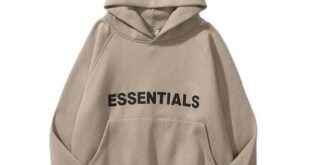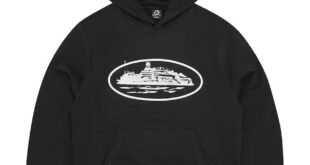The fashion supply chain encompasses all the processes involved in producing and delivering apparel to consumers. It is a complex system that includes raw material sourcing, manufacturing, distribution, retail, and even post-consumer disposal. A well-managed supply chain ensures efficiency, sustainability, and profitability in the fashion industry. This article explores the various stages of the fashion supply chain, the challenges faced, and emerging trends shaping the industry.
1. Raw Material Sourcing
The fashion supply chain begins with sourcing raw materials such as cotton, Visit now https://hellstarhoodieofficials.com/ wool, silk, synthetic fibers, and leather. These materials are obtained from farms, textile mills, or chemical factories, depending on whether they are natural or synthetic. The choice of raw materials plays a crucial role in determining the quality, sustainability, and cost of the final product. Ethical sourcing has become a key concern, prompting brands to opt for organic and fair-trade materials to reduce environmental impact and ensure fair labor practices.
2. Textile Production and Fabric Processing
Once raw materials are collected, they are processed into fabrics through spinning, weaving, knitting, or other methods. Dyeing, printing, and finishing treatments are applied to give fabrics color, texture, and special properties such as water resistance or stretchability. This stage has significant environmental implications due to water and chemical usage, making sustainable textile production an important industry focus. Many manufacturers are adopting eco-friendly dyes and closed-loop water systems to minimize pollution.
3. Garment Manufacturing
Fabric is then cut, sewn, and assembled into garments. This stage involves pattern-making, fabric cutting, stitching, and quality control. Garment manufacturing is often outsourced to factories in countries with lower labor costs, such as China, Bangladesh, and Vietnam. However, concerns about worker exploitation, poor working conditions, and low wages have led to increased demand for ethical manufacturing practices. Some brands are shifting to nearshoring—producing garments closer to their main markets—to improve supply chain transparency and reduce lead times.
4. Distribution and Logistics
After production, garments need to be transported to distribution centers, warehouses, and retail stores or directly to customers through e-commerce. This step involves complex logistics, including freight shipping, warehousing, and inventory management. Fast fashion brands prioritize speed, using air freight and automated distribution systems to ensure quick turnaround times. However, sustainable fashion brands are exploring slower, more eco-friendly transport methods such as sea freight and local sourcing to reduce carbon footprints.
5. Retail and Consumer Sales
Once garments reach retail locations or online platforms, they are marketed and sold to consumers. The rise of e-commerce has transformed retail, with brands increasingly focusing on direct-to-consumer (DTC) models that eliminate intermediaries. Personalization, AI-driven recommendations, and virtual try-on technologies are enhancing customer experiences. Physical retail stores continue to play a role, especially in luxury fashion, but omnichannel strategies that blend online and offline shopping are becoming the norm.
6. Post-Consumer Stage: Recycling and Disposal
The final stage of the fashion supply chain involves what happens to garments after consumer use. With growing concerns over textile waste, brands are investing in circular fashion initiatives, including recycling programs, second-hand markets, and biodegradable fabrics. Many companies encourage customers to return old clothes for recycling or resale, reducing landfill waste and promoting sustainability.
Challenges in the Fashion Supply Chain
Despite its efficiency, the fashion supply chain faces several challenges: Check it now https://ericemanuelclothing.shop/
- Sustainability Issues: The industry is one of the largest polluters, consuming vast amounts of water and producing significant carbon emissions. Brands must adopt greener practices to mitigate environmental damage.
- Labor Exploitation: Sweatshop conditions and unethical labor practices remain a concern, prompting calls for greater transparency and fair wages.
- Supply Chain Disruptions: Events such as the COVID-19 pandemic, trade restrictions, and geopolitical tensions disrupt production and logistics, leading to delays and increased costs.
- Demand Fluctuations: Fashion trends change rapidly, making inventory management difficult. Overproduction can lead to excessive waste, while underproduction can result in lost sales.
Emerging Trends in the Fashion Supply Chain
The fashion industry is evolving to address these challenges, with several key trends reshaping the supply chain:
- Sustainable and Ethical Sourcing: More brands are prioritizing eco-friendly materials, ethical labor practices, and carbon-neutral production.
- Digital Transformation: Technologies like AI, blockchain, and IoT are improving supply chain transparency, tracking, and efficiency.
- Local and On-Demand Manufacturing: Some brands are embracing local production and made-to-order models to reduce waste and improve customization.
- Resale and Circular Fashion: The second-hand clothing market is growing, with major brands launching resale platforms and recycling programs to extend garment lifecycles.
Conclusion
The fashion supply chain is a dynamic and intricate system that plays a crucial role in the industry’s success. While challenges such as sustainability, labor conditions, and disruptions persist, innovative solutions and evolving trends are paving the way for a more responsible and efficient supply chain. As consumer awareness grows, brands that adapt to ethical and sustainable practices will be better positioned for long-term success in the ever-changing world of fashion.
 Our Gateway to Insightful Blogging Exploring Ideas, Sharing Knowledge, Inspiring Minds
Our Gateway to Insightful Blogging Exploring Ideas, Sharing Knowledge, Inspiring Minds



